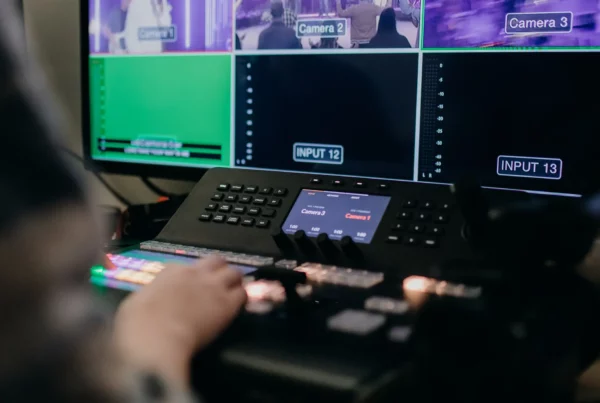Education at the collegiate level varies according to the college’s procured resources. However, in 2019, more higher education institutions are recognizing the importance of incorporating live streaming into their teaching practices. The number of live streams is expected to continue to grow substantially over the next five years. Just in 2012, approximately 86% of colleges reported to having a presence on YouTube, according to a Wainhouse Research Report.
Today, many colleges live stream their sports events to their commencement ceremonies. While, others refuse to innovate in the classroom. However, only good can be achieved with live streaming in education. Whether it’s a freshman student or a working professional seeking continuing education credits, live streaming adds another layer of connection and engagement to virtual classrooms.
Interactive Classroom in Education

Live streaming enables the students to see their professor’s facial expressions and mannerisms. This allows them to better understand their professor’s style of communication. Understanding their teaching techniques is easier to learn via live stream than trying to infer tone from emails or audio.
Live Questions
Going live allows students to “raise their hand” by uploading questions during the stream. Instead of waiting for the professor to respond in a chat during the week, the students can receive answers in real time. This may also be a good option for reserved students who would not feel as comfortable to ask questions in person. While a live stream does not provide complete anonymity, it creates a comfortable middle ground between distance learning and the in-classroom experience.
Virtual Office Hours

They may have a conflicting schedule with the office hours because of other classes, work study, internships, etc. It may also be difficult to catch their professors during office hours as there may be a long wait. While, there are times that a student may need to see a professor on a one-on-one basis, many students would benefit from virtual office hours. Additionally, virtual office hours via live streaming provides a global reach, allowing both local and international students to take advantage of these hours.
By using a live stream as office hours, students can learn from each other’s questions in real time. The professor can address any common misconceptions, upcoming exams or confusing assignments that are of concern.
Impact on Higher Education

In a digital culture where many viewers watch lectures and debates on YouTube, they also enjoy watching their favorite personalities answer questioning via live stream. The same idea can be applied to the classroom at university.
For college and universities with extensive distance learning programs, investing in live streaming services, such as Contentflow, can better equip them to provide students with a platform that works to suit their needs.






 This project has received funding from the European Union’s Horizon 2020 research and innovation programme under grant agreement No 876239, 959379 & 965502.
This project has received funding from the European Union’s Horizon 2020 research and innovation programme under grant agreement No 876239, 959379 & 965502.
